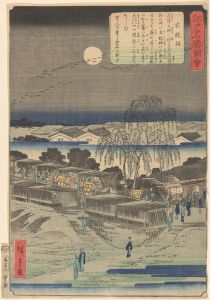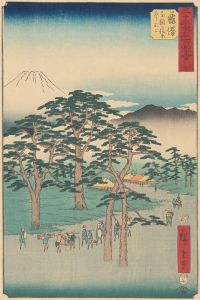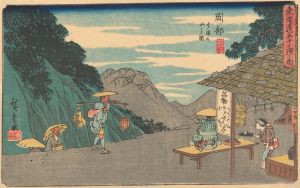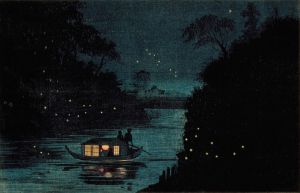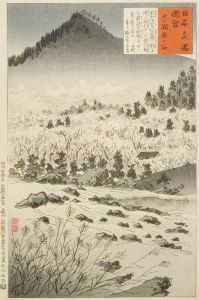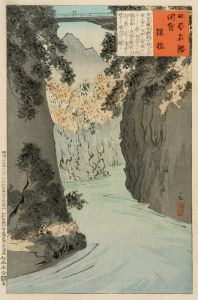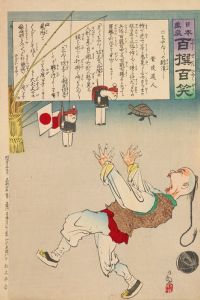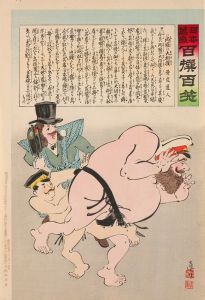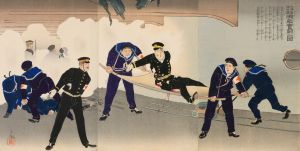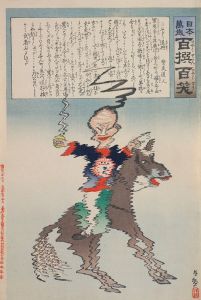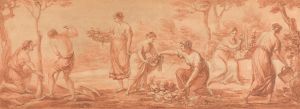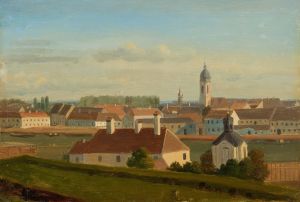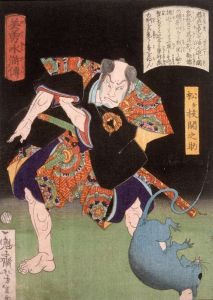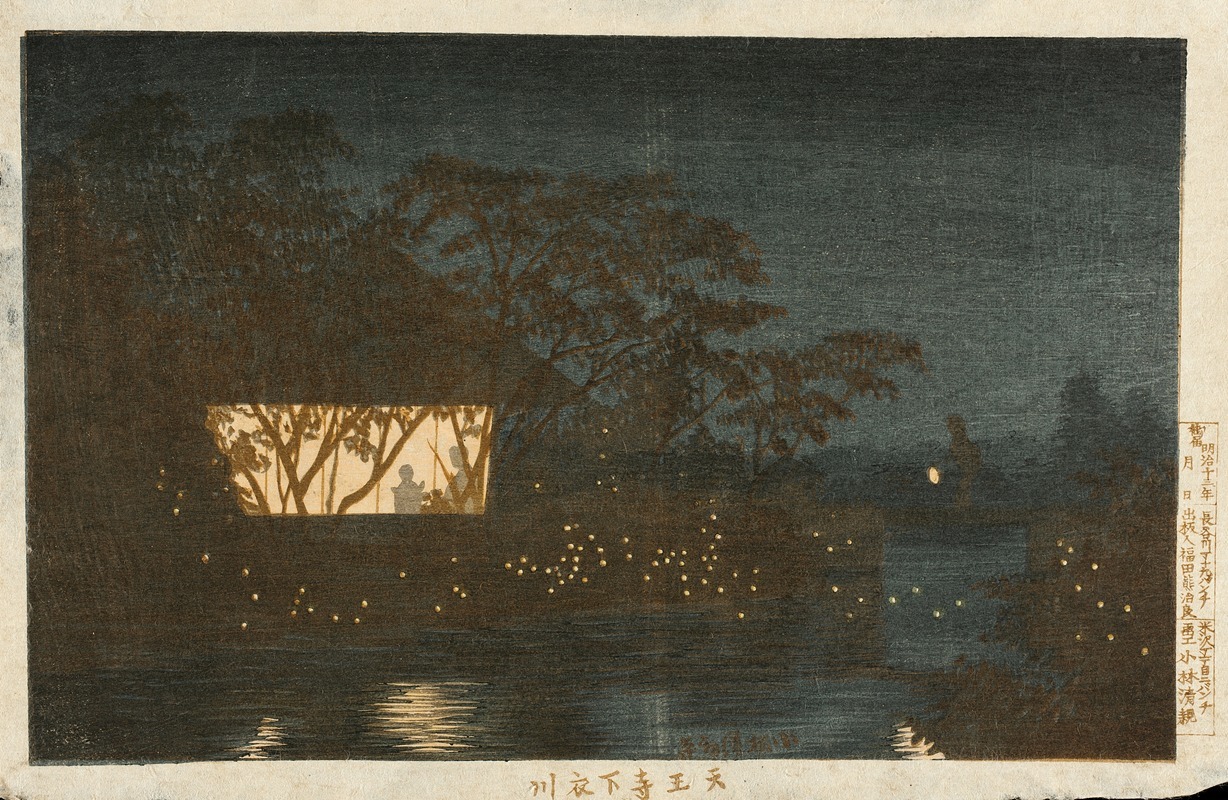
Koromo River below the Temple Tennōji
A hand-painted replica of Kobayashi Kiyochika’s masterpiece Koromo River below the Temple Tennōji, meticulously crafted by professional artists to capture the true essence of the original. Each piece is created with museum-quality canvas and rare mineral pigments, carefully painted by experienced artists with delicate brushstrokes and rich, layered colors to perfectly recreate the texture of the original artwork. Unlike machine-printed reproductions, this hand-painted version brings the painting to life, infused with the artist’s emotions and skill in every stroke. Whether for personal collection or home decoration, it instantly elevates the artistic atmosphere of any space.
Kobayashi Kiyochika (1847–1915) was a Japanese ukiyo-e artist known for his innovative approach to woodblock prints during the Meiji period. His works often depicted the rapid modernization of Japan, blending traditional ukiyo-e techniques with Western artistic influences such as perspective and shading. One of his notable works is "Koromo River below the Temple Tennōji," which exemplifies his unique style and thematic focus.
This artwork is part of Kiyochika's broader exploration of landscapes and urban scenes, capturing the transformation of Japan during the late 19th century. The print depicts the Koromo River, a waterway that flows near Tennōji Temple, a historic Buddhist temple in Tokyo. The scene is rendered with meticulous detail, showcasing Kiyochika's mastery of light and shadow, a hallmark of his artistic approach. The use of chiaroscuro, a technique he adopted from Western art, creates a dramatic atmosphere, emphasizing the interplay between natural and man-made elements.
Kiyochika's work often reflected the cultural and technological changes occurring in Japan during the Meiji era (1868–1912). This period was marked by rapid industrialization and the introduction of Western technologies and ideas. In "Koromo River below the Temple Tennōji," Kiyochika captures a moment of quiet beauty, juxtaposing the timeless serenity of the temple and river with the subtle signs of modernization that were becoming increasingly prevalent in Japanese society.
The print is part of a larger body of work in which Kiyochika documented the evolving landscapes of Tokyo, then known as Edo. His series of prints often focused on the interplay between traditional Japanese architecture, natural scenery, and the encroaching influence of modernity. While many ukiyo-e artists of his time concentrated on portraits of kabuki actors or courtesans, Kiyochika distinguished himself by focusing on landscapes and urban scenes, earning him recognition as a pioneer of modern Japanese printmaking.
"Koromo River below the Temple Tennōji" is a testament to Kiyochika's ability to blend traditional Japanese aesthetics with new artistic techniques. His work provides valuable insight into the cultural and environmental changes of Meiji-era Japan, making it an important piece for understanding the history of Japanese art and society during this transformative period.





